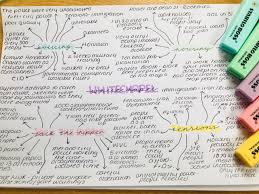validity
Cards (13)
- What threatens internal validity?Extraneous variables
- don’t vary systematically with the IV but may still have an effect on the DV. Make it difficult to detect specific effect.
Confounding variables- is not the IV but varies systematically with the IV, So changes in DV may be due to confounding variables and not the IV so the outcome is meaningless
- Describe two ways of assessing and improving internal validity
- Face validity- the extent to which the test items look like what the test claims to measure. Improve- questions should be revised so they relate more obviously to one topic
- Concurrent validity- when you compare an established test/questionnaire which claims to measure the same variable with the new method. Any positive correlation should be gained between the results of the two tests. Improve- remove questions which may seem irrelevant
- what is internal validity?The degree to which an observed effect is due to experimental manipulation rather than confounding/extraneous variables
- state 3 ways of reducing participant variables
- matched pairs
- repeated measures
- random allocation
- state a way of reducing situational variables
- standardise procedures
- make sure study takes place at same time of day, in same place, etc
- how can you reduce demand characteristics?
- single blind trial
- How can you reduce investigator effects?
- double blind
- standardise procedures/instructions
- How can we reduce participant effects like social desirability bias and the Hawthorne effect?
- social desirability- ensure confidentiality of participants will be put in place
- Hawthorne effect- ensure experimental realism- eg sufficiently engaging with pps so they focus on the task and don't pay attention to the fact they are being observed
- what is external validity?degree to which experimental findings can be generalised to other settings to different groups of people over time
- what is ecological validity?a form of external validity, ability to generalise a research effect beyond the setting it's demonstrated in to real life
- what is temporal validity?ability to generalise research findings beyond a particular time period
- how can order effects be controlled?use counterbalaning
- what are the three types of external validity, how are they assessed?
- population validity- when findings can be generalised to a larger group of people. Assessed by analysing how the results can be applied to groups of people other than study sample
- Temporal validity- findings can be generalised to time periods beyond that of the study. Assessed by repeating experiment in different time periods
- Ecological validity- experimental effect can be generalised to settings in every day life/reality. Assessed by assessing control of investigation and the test materials used- are they too artificial?
